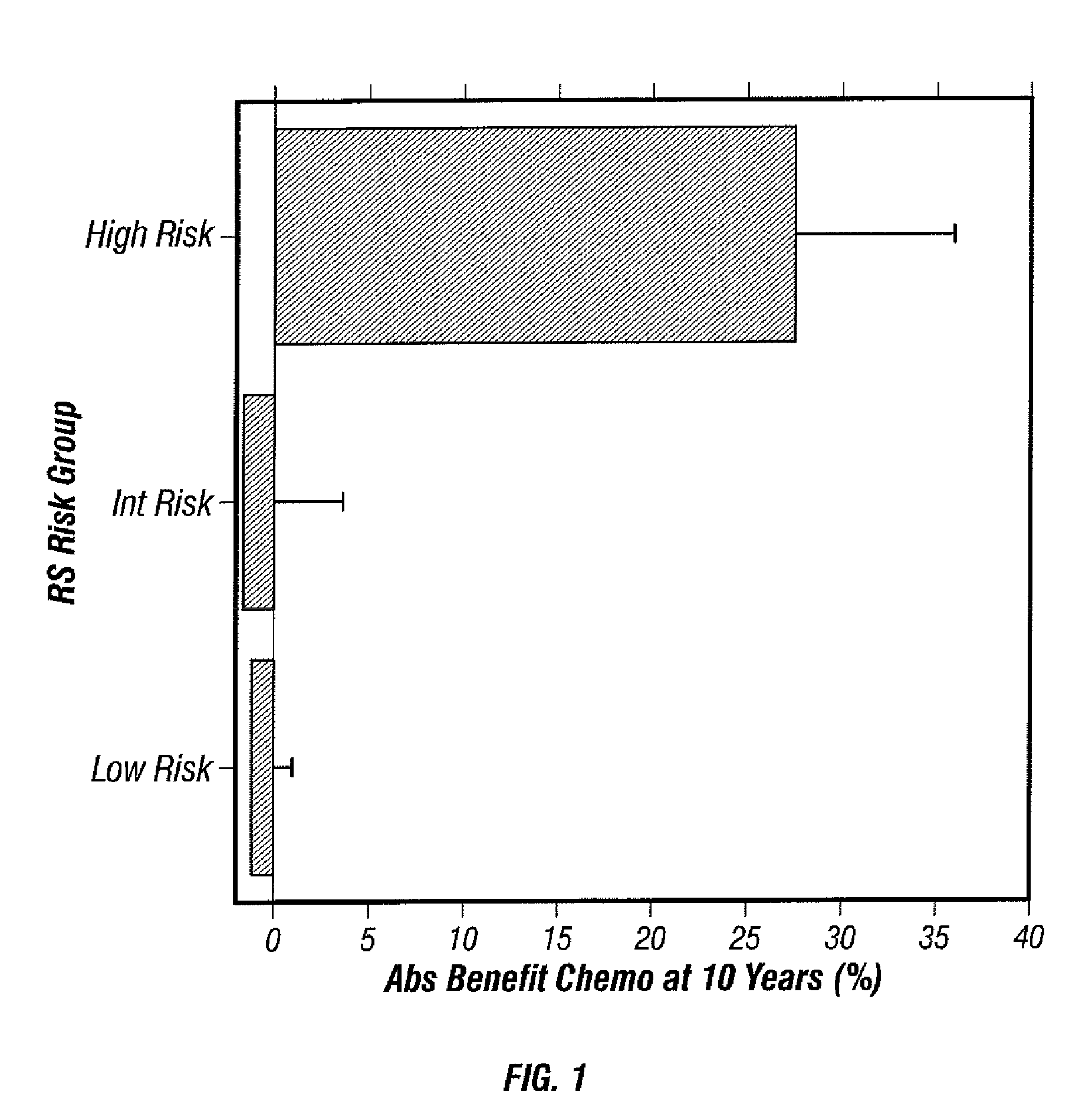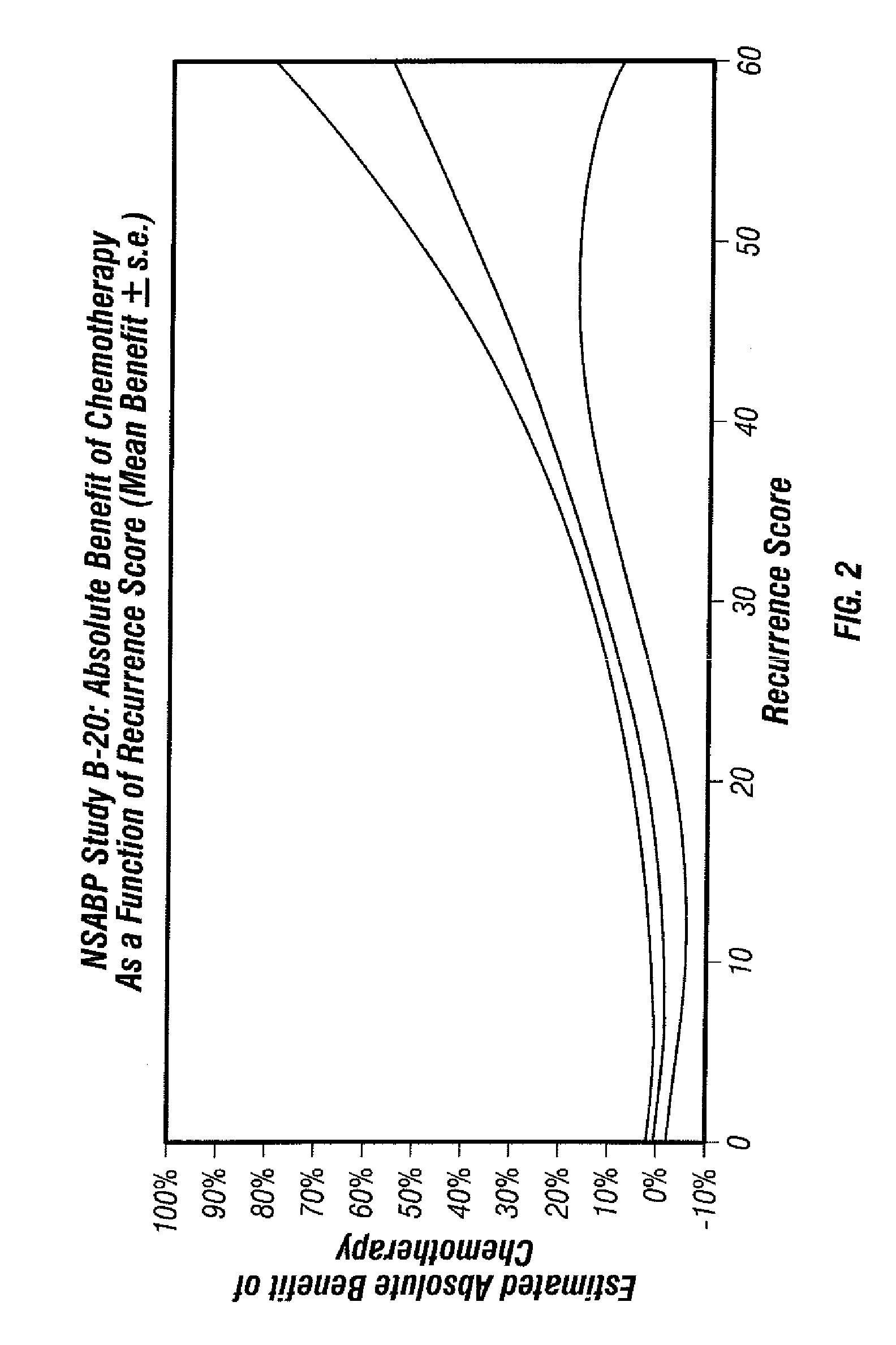Predicting response to chemotherapy using gene expression markers
a gene expression and gene technology, applied in the field of gene expression information, can solve the problems of limited efficacy, inability to capture the potential value of knowing relationships, and inability to develop rna-based tests, which are potentially highly quantitative, and have not yet been developed
- Summary
- Abstract
- Description
- Claims
- Application Information
AI Technical Summary
Benefits of technology
Problems solved by technology
Method used
Image
Examples
example
[0181]A Study of Adjuvant Chemotherapy in Invasive Breast Cancer: Gene Expression Profiling of Paraffin-Embedded Core Biopsy Tissue
[0182]This study was carried out to identify genes or gene groups that predict patient sensitivity or resistance to chemotherapy. The study utilized tissue and data from NSABP Study B-20: “A Clinical Trial to Determine the Worth of Chemotherapy and Tamoxifen over Tamoxifen Alone in the Management of Patients with Primary Invasive Breast Cancer, Negative Axillary Nodes and Estrogen-Receptor-Positive Tumors.” Fisher et al., J Natl Cancer Inst 89(22):1673-1682 (1997).
[0183]Study Design
[0184]Patient inclusion criteria: Enrolled in NSABP Study B-20. Patient exclusion criteria: No tumor block available from initial diagnosis in the NSABP archive; no tumor or very little tumor in block as assessed by examination of the H&E slide by pathologist; insufficient RNA (<275 ng) for RT-PCR analysis; average non-normalized CT for the 5 reference genes <35; clinical inel...
PUM
| Property | Measurement | Unit |
|---|---|---|
| thick | aaaaa | aaaaa |
| diameter | aaaaa | aaaaa |
| resistance | aaaaa | aaaaa |
Abstract
Description
Claims
Application Information
 Login to View More
Login to View More - R&D
- Intellectual Property
- Life Sciences
- Materials
- Tech Scout
- Unparalleled Data Quality
- Higher Quality Content
- 60% Fewer Hallucinations
Browse by: Latest US Patents, China's latest patents, Technical Efficacy Thesaurus, Application Domain, Technology Topic, Popular Technical Reports.
© 2025 PatSnap. All rights reserved.Legal|Privacy policy|Modern Slavery Act Transparency Statement|Sitemap|About US| Contact US: help@patsnap.com



